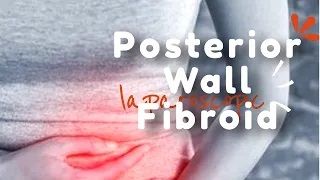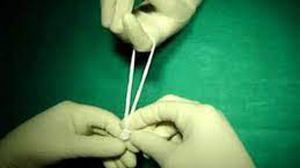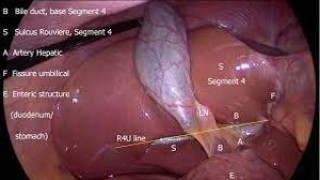Precise TLH + BSO: Fluorescence Imaging of Ureter and Uterine Artery
Add to
Share
1,656 views
Report
2 years ago
Description
Introduction: Total laparoscopic hysterectomy (TLH) with bilateral salpingo-oophorectomy (BSO) is a minimally invasive surgical procedure commonly performed to treat various gynecological conditions. Recent advancements in surgical techniques have introduced the use of fluorescence imaging to enhance the visualization of critical structures such as the ureter and uterine artery during the procedure. This essay explores the significant impact of incorporating fluorescence imaging into TLH + BSO, highlighting its benefits, increased precision, and improved patient outcomes. Body: Total Laparoscopic Hysterectomy + BSO: Total laparoscopic hysterectomy with bilateral salpingo-oophorectomy is a minimally invasive approach to remove the uterus, cervix, fallopian tubes, and ovaries. It offers several advantages over traditional open surgery, including smaller incisions, reduced post-operative pain, shorter hospital stays, and faster recovery times. The incorporation of advanced imaging techniques has further revolutionized this procedure, enhancing surgical precision and safety. Fluorescence Imaging: A Revolutionary Tool: Fluorescence imaging utilizes the administration of a fluorescent dye that selectively binds to specific structures, making them easily distinguishable during surgery. In the case of TLH + BSO, the dye can be used to visualize the ureter and uterine artery, crucial structures prone to injury during the procedure. By illuminating these structures, surgeons gain enhanced visualization and can navigate with greater precision, minimizing the risk of complications. Benefits of Fluorescence Imaging in TLH + BSO: The incorporation of fluorescence imaging in TLH + BSO offers numerous benefits. Firstly, it allows surgeons to identify and protect the delicate ureter, reducing the risk of inadvertent injury and subsequent complications such as ureteral strictures or fistulas. Similarly, visualizing the uterine artery ensures its safe ligation, preventing excessive bleeding and improving surgical outcomes. By enhancing precision and reducing the likelihood of complications, fluorescence imaging promotes better patient safety and post-operative recovery. Improved Patient Outcomes and Recovery: The use of fluorescence imaging in TLH + BSO contributes to improved patient outcomes. By reducing the risk of injury to critical structures, patients experience fewer post-operative complications and enjoy a smoother recovery process. The minimally invasive nature of TLH + BSO already lends itself to faster recovery times, reduced scarring, and shorter hospital stays. With the addition of fluorescence imaging, these benefits are further amplified, leading to enhanced patient satisfaction and improved overall quality of care. Advancements and Future Directions: As technology continues to advance, fluorescence imaging techniques are expected to further evolve and improve. Ongoing research focuses on optimizing the fluorescence dyes used, refining imaging systems, and exploring additional applications of fluorescence imaging in gynecological surgeries. These advancements hold the potential to revolutionize TLH + BSO and other surgical procedures, further enhancing patient outcomes and surgical precision. Total Laparoscopic Hysterectomy (TLH) with Bilateral Salpingo-Oophorectomy (BSO) is a minimally invasive surgical procedure performed to remove the uterus, cervix, fallopian tubes, and ovaries. Recent advancements in surgical techniques have introduced the use of fluorescence imaging to enhance the visualization of critical structures, such as the ureter and uterine artery, during the procedure. This description highlights the benefits of incorporating fluorescence imaging into TLH + BSO, including improved precision, reduced risk of complications, and enhanced patient outcomes. By utilizing fluorescence dyes and specialized imaging systems, surgeons can identify and protect delicate structures, minimizing the risk of injury and optimizing surgical success. The integration of fluorescence imaging into TLH + BSO represents a significant advancement in gynecological surgery, leading to improved patient safety, faster recovery, and overall better quality of care. Conclusion: The incorporation of fluorescence imaging into total laparoscopic hysterectomy with bilateral salpingo-oophorectomy represents a significant advancement in gynecological surgery. By enabling precise visualization of critical structures such as the ureter and uterine artery, fluorescence imaging enhances surgical precision, reduces complications, and improves patient outcomes. As this technology continues to evolve, it holds promise for further advancements in gynecological procedures, ultimately benefiting patients by ensuring safer and more effective surgical interventions. The integration of fluorescence imaging into TLH + BSO exemplifies the continuous pursuit of surgical excellence and improved patient care in the field of gynecology.
Similar Videos






